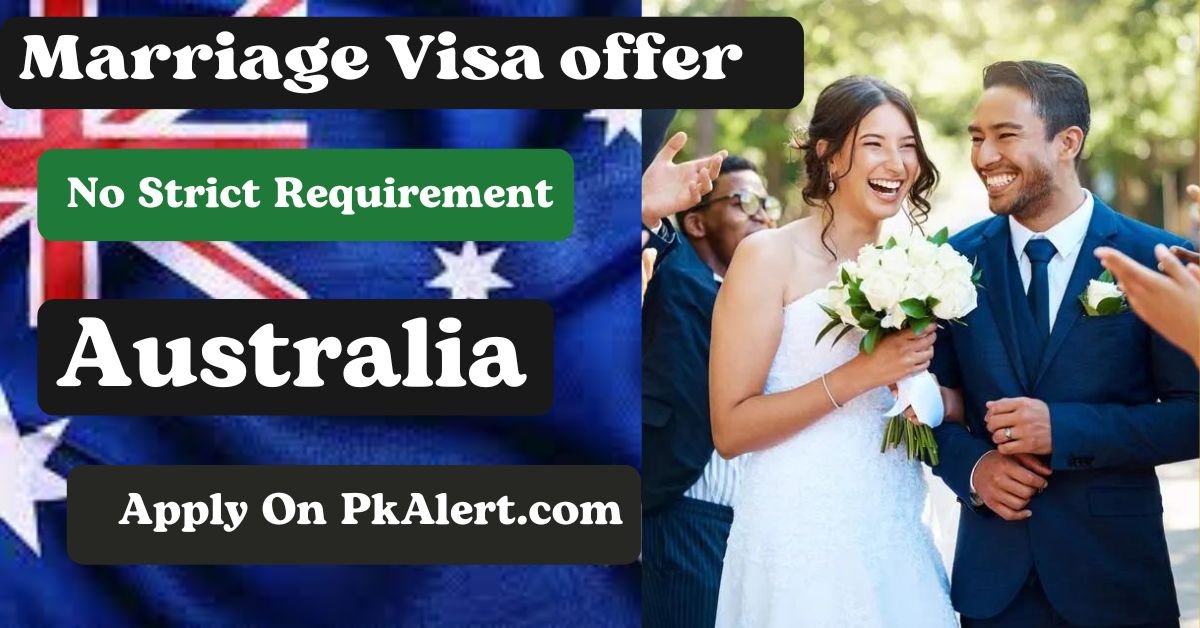Australia Marry an Aussie, Get Permanent Residency: The Ultimate Visa Guide!
Considering partnering with an Australian and eyeing permanent residency Down Under? Your best bet might be the Subclass 300 visa, sometimes known as the prospective marriage visa. Designed for engaged couples who reside abroad, it provides a route to Australia. Yet, the application journey and meeting requirements are intricate. Here’s a concise guide to the Subclass 300 visa, shedding light on vital details for hopeful applicants in Australia Marry an Aussie, Get Permanent Residency: The Ultimate Visa Guide!
Advertisement
Advertisement
Advertisement
An outline of the 300-subclass visa:
Those who wish to marry a qualified Australian citizen, permanent resident, or New Zealand citizen are eligible for the 300 visa. It grants a nine-month window to enter Australia for marriage purposes. Subsequently, the married couple can seek an onshore partner visa for permanent residency.
Application Process:
Applications for the Subclass 300 visa must come from sources outside of Australia. Once granted, they must be outside Australia. After that, candidates can apply for the onshore partner visa, which consists of the permanent subclass 801 visa and the temporary subclass 820 visa.
Follow US
If you Want to Get Updates daily related to visa sponsorship, Work permits, Jobs, and Marriage, Visa You are following us on the below platform we share information daily.
| Join | Our WhatsApp |
| Follow OUR | |
| Subscribe OUR | Youtube Channel |
| Follow Our | Facebook, LinkedIn |
Eligibility Criteria:
- Age: 18 years or older
- Intention: Marry an Australian citizen, permanent resident, or eligible New Zealand citizen
- Sponsorship: Sponsored by a prospective spouse
- Relationship: Met partner in person and maintained a genuine relationship
- Timeline: Intending to marry within nine months of visa grant
- Health and Character: Meeting requirements
To obtain a visa, applicants must genuinely intend to marry their Australian partner within a specified timeframe. They need to furnish proof of marriage arrangements, including a signed letter from an authorized marriage celebrant and confirmation of lodging a Notice of Intention to Marry (NOIM).
Living Together as Spouses:
Applicants must exhibit a sincere commitment to cohabit as spouses post-marriage. Criteria encompass financial plans, social blending, shared household duties, and the depth of relational dedication.
Application Documentation:
Application mandates identity and character documents, relationship evidence, and historical/future statements.
Costs and Processing Times:
Applicants should note that fees for the application are subject to change and additional expenses, including medical examinations and character checks, should be considered. Processing times for the Subclass 300 visa may vary and can be lengthy, potentially extending the overall pathway to permanent residency to over five years.
Visiting Partner in Australia:
Consider applying for an Australian visitor visa to visit your partner during the processing duration.
The outcome of the Visa Decision:
If approved, a Subclass 300 visa allows travel to Australia for marriage within a set time. If denied, applicants can appeal to the Administrative Appeals Tribunal (AAT) adhering to defined procedures and timelines.
Conclusion:
The Subclass 300 Prospective Marriage Visa facilitates couples intending to marry and settle in Australia. Successful applicants can pursue permanent residency with their Australian partners through thorough documentation and adherence to requirements. Seeking professional advice and understanding the visa process are crucial for achieving this goal.
